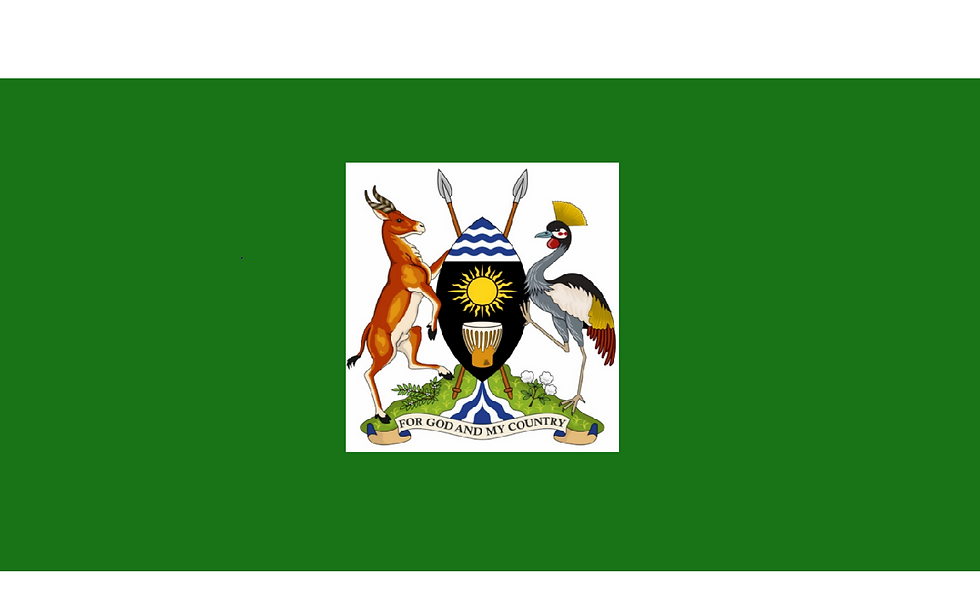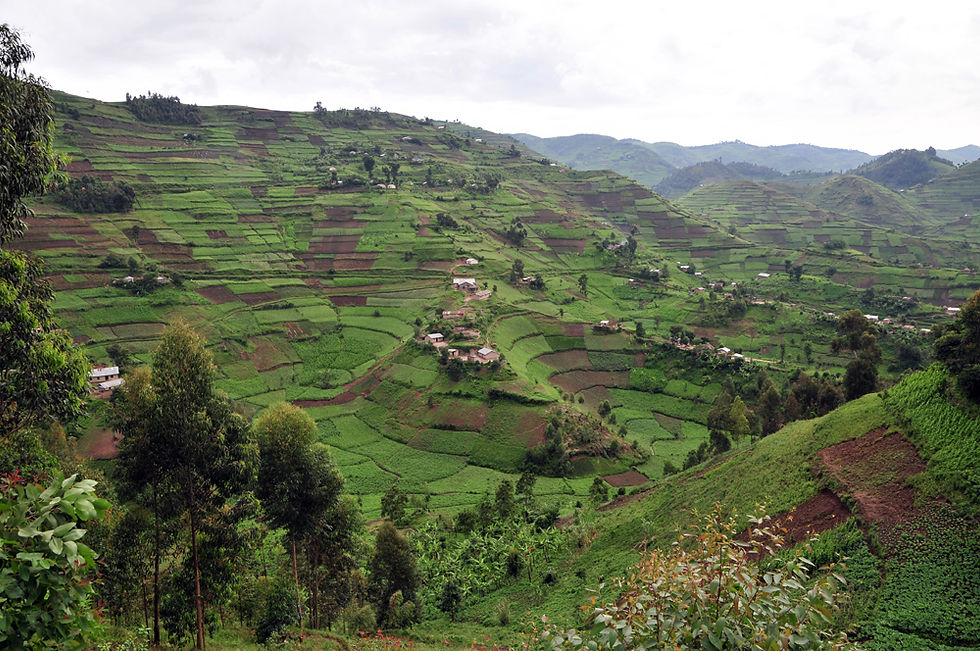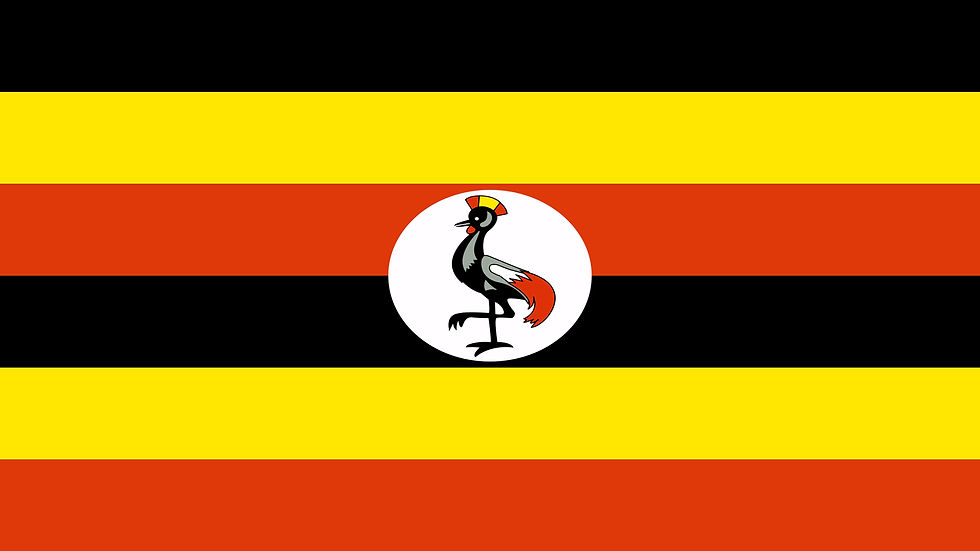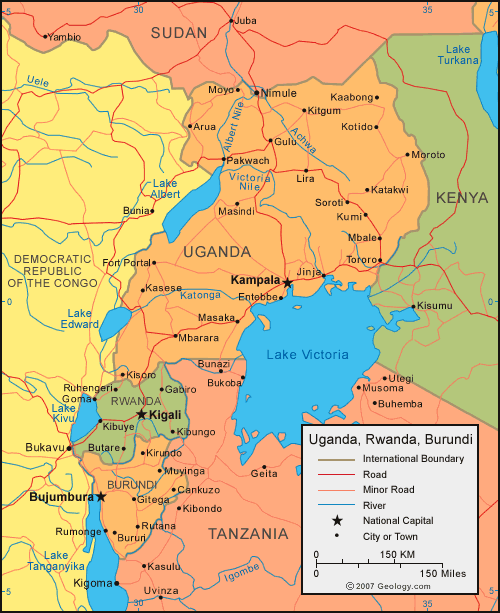




OVERVIEW
Located on the edge of the equator, Uganda is positioned in the south-central Africa and it is twice the size of Pennsylvania in east Africa. The country is bordered on the west by the Republic of Condo, east by Kenya, and on south by Tanzania and Rwanda. It is divided into three main areas namely Swampy lowlands, a fertile plateau with wooded hills and a desert region. Lake Victoria forms part on the southern border. Uganda became independent on Oct 9 1962 and it has a total population of about 32 million people.


Geography
AREA
Land Area: 199,808 Sq. Km.
Water and Swamps: 41,743 Sq. Km
Total Area: 241,551 Sq. Km.
LOCATION
Latitude: 4012’N and 1029’S
Longitude:29034’E and 3500’W
ALTITUDE
Minimum (above sea level – Albert Nile): 620 meters
Maximum (above sea level – Mt. Rwenzori): 5,110 meters
CLIMATE
Kampala: Annual Mean Temperature: 17.00C
Kampala: Annual Rainfall: 1436.0 mm
LAND USE
Arable Land: 25%
Permanent Crops: 9%
Permanent Pastures:9%
Forests and Woodland: 28%
Other: 29%
MAJOR LANGUAGES
English, Luganda and Kiswahili
Economy
Uganda’s economy is made up of the Agriculture 24.2%; Industry 25.5%; and Services 50.3% sectors. The Agricultural sector includes Fisheries, Animal Husbandry, Dairy, and Crop sub-sectors. While the Industrial sector includes Manufacturing, Construction, and Electricity Supply sub-sectors; the Services sector is made up of Wholesale and Retail trade, Telecommunications, Hotels and Restaurants, Transport and Communications and Tourism sub sectors. Uganda has sustained economic growth at an average rate of 7% per annum.
National Symbol
The shield and spears represent the willingness of the Ugandan people to defend their country. It is flanked on the right by a Crested Crane, a subspecies of the Grey-crowned Crane and the national bird of Uganda. On the left is the Ugandan Kob, a species of Kob that here represents abundant wildlife. It stands on a green mound, representing fertile land, and directly above a representation of the River Nile. Two main cash crops, coffee and cotton, flank the river. There are three images on the shield: those on top represent the waves of Lake Victoria; the sun in the center represents the many days of brilliant sunshine Uganda enjoys; and the traditional drum at the bottom is symbolic of dancing, and the summoning of people to meetings and ceremony. At the bottom is the national motto: "For God and My Country".